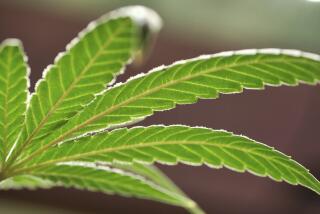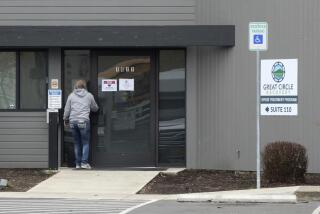As Cocaine Comes Off a High, Heroin May Be Filling Void
- Share via
WASHINGTON — Even as signs of progress increase in the struggle against cocaine, some drug enforcement officials are becoming concerned about a possible resurgence of heroin, a drug that has been out of the spotlight since the late 1960s.
Not only are heroin supplies high and prices low, but past experience suggests that the times may be ripe for a comeback by heroin or a similar narcotic. While cocaine is a chemical stimulant, heroin is a depressant--and experts say long-term patterns of drug-abuse suggest that periods in which depressants dominate drug-use often follow those in which stimulants are the drugs of choice.
“Every stimulant epidemic with which I am familiar has been followed by the increased use of sedatives,” says Dr. Herbert Kleber, deputy director for demand-reduction at the Office of National Drug Control Policy. “Stimulants such as cocaine wear people out. As a result, they often turn to sedatives like heroin to calm their nerves and to achieve a more soothing high.”
Kleber and other drug-enforcement officials warned the House Select Committee on Narcotics Abuse and Control that evidence suggests that the stage is set for heroin to return.
EVIDENCE: Heroin use spread rapidly in the 1960s, but by 1972 the head of the Federal Special Action Offices for Drug Abuse Prevention told Congress that its use was leveling off.
In recent years, however, government statistics show a dramatic increase in street supplies of heroin. Sales to undercover agents in various cities reveal that the on-the-street price, considered a major indicator of a drug’s availability, is as low as 62 cents per dose of Southeast Asian heroin in Los Angeles. Although the DEA doesn’t have figures for the price of a similar dose in Los Angeles before 1990, officials say today’s price represents a substantial drop.
Nationwide, the average price per dose has fallen from $3.11 in 1983 to $2.15 in 1990, according to DEA figures.
Another significant measure of a drug’s availability is its purity level, according to Ronald Caffrey of the Drug Enforcement Administration. He estimates the nationwide average purity level for heroin has soared above 18%--compared with 4% to 6% in the early 1980s.
“Purity levels are higher than we’ve ever seen them,” he says. “In some Eastern states, they’ve been as high as 40%. That’s enough to kill a guy who hadn’t taken it recently.”
In addition, the State Department estimates that worldwide production has more than quadrupled since 1985--jumping from 625 metric tons to 2,565 metric tons in 1990. The United States consumes roughly 2% of total world production, and seizures of heroin by DEA also quadrupled between 1981 and 1989.
OUTLOOK: Kleber and others say the widespread use of crack cocaine in extremely powerful doses may encourage the use of depressants such as heroin to counter the jittery side effects of cocaine. Initially, cocaine and heroin can be used together--commonly known as a “speedball”--to enhance the effects of each, Kleber says. This is typically followed by use of a sedative to “mellow out.”
In addition, he says, the greater purity of the drug on the streets has increased the likelihood that it will be snorted or smoked rather than injected. That, in turn, can stimulate demand by reducing the fear of AIDS, which has kept many would-be users away. “Some drug users who previously stayed away from heroin because of their fear of needles and infection may now be more willing to smoke or snort it,” Kleber says.
While it’s too early to tell how big a problem heroin will turn out to be, there are already signs that it could be serious. In Los Angeles County alone, Department of Health Services records show an increase of 52.7% in the number of heroin deaths between 1985 and 1989.
More to Read
Sign up for Essential California
The most important California stories and recommendations in your inbox every morning.
You may occasionally receive promotional content from the Los Angeles Times.










